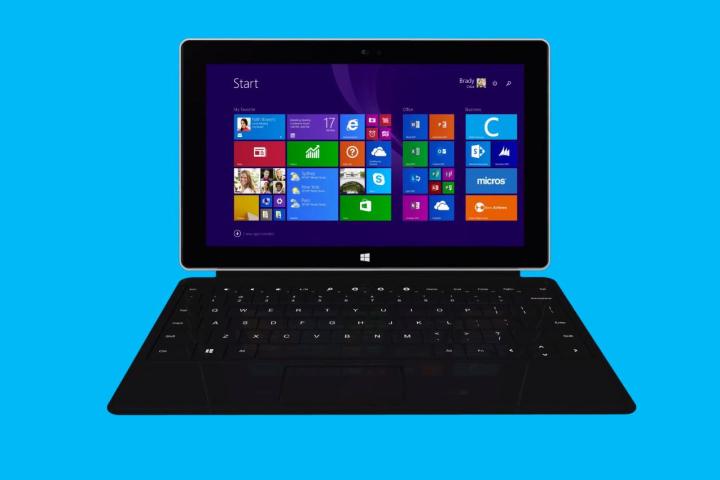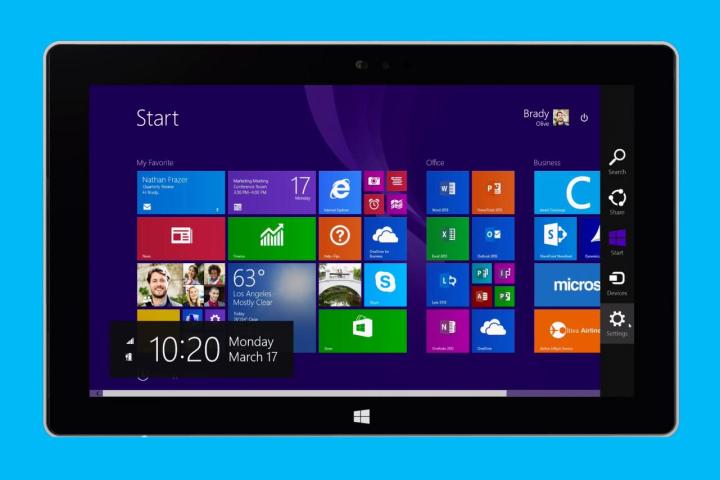
It’s easy to understand why many computer users, particularly those who’ve stuck with Windows XP since its launch way back in 2001, have done their best to steer clear of Windows 8.
When Windows 8 was first released in October 2012, Windows 8 was essentially an unfinished touchscreen OS best suited for tablets, slapped hastily atop an updated version of the Windows 7 desktop. Microsoft has attempted to catch up in the exploding mobile market, as traditional PC sales were starting to shrink at the time.
So the company pushed the touch-centric Start screen and its Live Tile interface hard, both in ads and by forcing all users to boot to the touch-centric interface. With this move, it was hard for the average user to even tell that there was, in fact, a more traditional desktop underneath those confusing, colorful tiles.
Windows 8 is finally ready to be welcomed by the great un-upgraded masses who have stuck with XP for a decade or more.
If you’re a Windows user who doesn’t want (or doesn’t want to pay extra for) a touchscreen, and you’ve so far been frustrated or frightened by what you’ve seen with Windows 8, I’m here to tell you that there’s really no reason for you to tell anyone that they’ll have to pry Windows XP from your cold, dead mouse hand.
Between the release of Windows 8.1 last fall, and the newly-released Windows 8.1 Update, Windows 8 is a whole lot friendlier to non-touch users than it used to be. Though many of my colleagues will disagree, it really was never all that bad to use without a touchscreen, anyway.
Full disclosure: I’ve been using Windows 8 on my main productivity machine, a custom-built, multi-monitor (non-touch) desktop, since the day Windows 8 initially launched in 2012. I have mostly been very happy with the OS, so I’m not a Windows 8 naysayer by any means. However, I do readily admit that Microsoft fumbled badly with the initial launch of Windows 8, alienating many desktop users and prospective buyers, likely pushing many to Apple devices and, to a lesser extent, Chromebooks.
But I also think that, at this point, Windows 8 is finally ready to be welcomed by the great un-upgraded masses who have stuck with XP for a decade or more, and are now being urged to upgrade to a newer version of Windows. Here are a few key reasons why Windows XP users no longer need to fear Microsoft’s latest OS.
Boot to the desktop
Windows will no longer dump all users into the Start tiled screen, which is meant for touch devices. Users have actually been able to choose to boot directly to the desktop since the October 2013 8.1 update. Now, with the latest update, the OS should be set up to boot to the desktop automatically if you’re running Window 8.1 on a system without a touchscreen, while using a keyboard and a mouse (or touchpad).

This will be a big deal for Windows XP users. Aside from the absence of the Start menu, the Windows 8.1 desktop looks and feels similar compared to Windows 7’s. It’s worth noting that the Windows 7 desktop wasn’t a drastic departure from Windows XP’s.
Also, mousing over to the upper right corner to close a program or window, or moving up to the upper-left corner to click the browser’s back button won’t bring up the touch-centric Charms bar or show thumbnails of running apps. With Windows 8.1 Update 1, you’ll have to hesitate purposefully in these areas with your cursor to bring up the touch-centric menus.
You can change the Start screen to show desktop programs
If most of what you do in Windows involves traditional Windows software (like Photoshop or Office), you can switch the Start screen (which you can get to by hitting the Windows key on your keyboard) to show your desktop programs, rather than the touch-centric Windows 8 apps and Live Tiles.
This isn’t as familiar of an interface as the Start menu in Windows XP and Windows 7 are, but it will give desktop users easier access to their traditional Windows programs.
To enable this, right-click on the Taskbar, then click Properties, and then click the Navigation tab in the new window. Check the boxes marked “Show the Apps view automatically when I go to Start” and “List desktop apps first…,” and then click “Apply.” Now, when you press the Windows button, you’ll at least be greeted by a visual list of your Windows programs, rather than Live Tiles and touch apps.
If you don’t see something you’re looking for on the list, you can start typing the name of what you’re looking for, be it a program or a file, and Windows 8 instantly delivers a list of matching items.
The Start menu is returning eventually, but in the meantime, try right-clicking
At Microsoft’s latest Build conference, the company showed off what for many was Windows 8’s most-wanted feature, a return of the familiar Start menu. It isn’t ready yet, but could roll out in the fall with the next Windows update.
Windows 8 is a whole lot friendlier to non-touch users than it used to be.
In the meantime, XP users looking for some of what the Start Menu brings to the table can right-click on the Windows logo in the lower-left corner, where the Start button used to be (and seemingly will be again in the future).
Right-clicking the Start button will give you easy access to handy things like your installed programs, Device Manager, Control Panel, File Explorer, the Command Prompt, and the System window. You can also shut down or restart from here, which is much easier than having to bring up the Charms bar. This menu isn’t as handy as the old Start Menu, but it is an improvement over the initial version of Windows 8, which foolishly tried to push desktop users to the Start screen for most of these tasks.
Improved features and stability
There are also plenty of great features that Microsoft has added to Windows over the last dozen or so years, which may be new to users who have thus-far stuck with XP.
For instance, you can drag program files, program shortcuts, and folders to the Taskbar at the bottom of the screen and pin them there for easy access. This is a great way to organize your desktop and keep things from getting too cluttered.
I’ve used this feature every day for the past several years, and would never want to go back to an OS that doesn’t have it. Although, to be honest, my desktop is still usually a mess.

Finding a file or program that’s lost on your hard drive is also now much easier and faster than it ever was in XP. I touched on this earlier, but with Windows 8’s Search function, all you have to do is hit the Windows key (if you’re in the desktop) and start typing. Almost without fail, the file, folder, or program you’re looking for will pop up at the top of the list within a second, before you’ve finished typing the first word. Once you’ve found what you’re looking for here, you can right-click on it and pin it to the Start screen or the Taskbar, ensuring that you won’t lose track of it again.
Windows 8.1 is also much more stable than Windows XP, believe it or not. I did have a major issue with the original version of Windows 8 a month or so after it launched, which forced me to reinstall the OS and my programs. Since then, I can barely remember a desktop program crashing on me, and the only time I ever saw the dreaded blue-screen of death was when my solid-state drive died. Thankfully, I had a recent image of my boot drive saved on a separate hard drive, so I was back up and running in less than an hour.
Conclusion
There are plenty of other features that many XP users can appreciate about Windows 8, but there isn’t room to list them all here. To explore the OS in more depth, feel free to peruse our review of Windows 8.1. If you’ve recently upgraded your OS or moved to a new Windows 8.1 laptop, desktop, convertible, or tablet, feel free to chime in with your thoughts and questions below.
I’m certainly no Windows 8 apologist, but I think the OS is finally ready to be embraced by non-touchscreen users with its latest update. Windows 8.1 is far from perfect, but it’s much improved for die-hard desktop users.
Editors' Recommendations
- How to connect Bluetooth headphones to PC
- Windows 11 tips and tricks: 8 hidden settings you need to try
- How to install Android apps on Windows 11
- How to downgrade from Windows 11 to Windows 10
- How to install Windows on a Steam Deck






